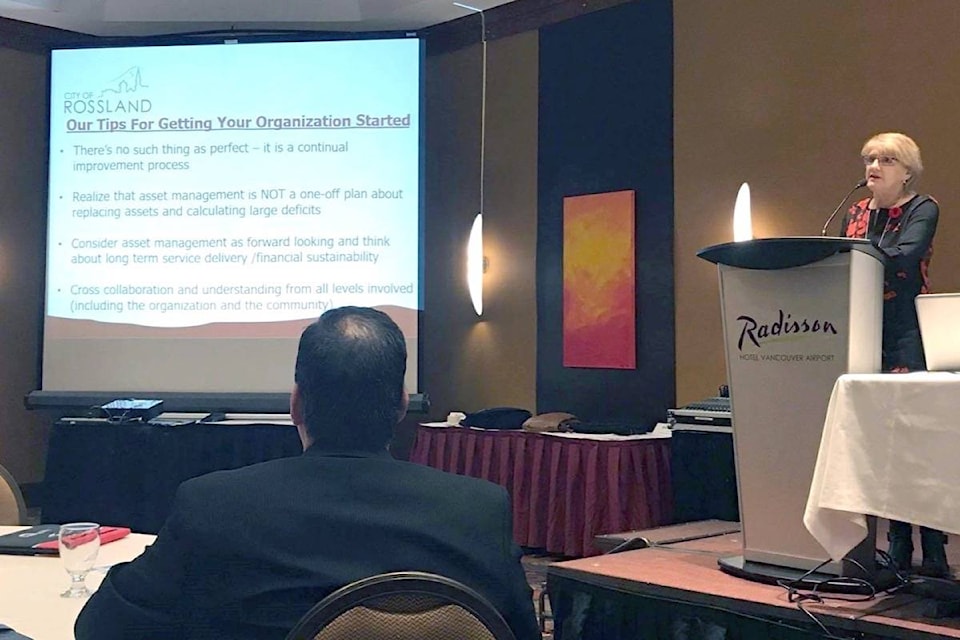The City of Rossland’s recent efforts to create a strong policy and decision-making framework for municipal asset management took centre stage at the 2017 Asset Management BC Conference in Richmond on Friday, Nov. 10 as Rossland’s mayor and chief administrative officer delivered the day’s keynote speech.
In their presentation, Mayor Kathy Moore and CAO Bryan Teasdale recapped Rossland’s history in regards to assets and infrastructure planning.
“In the recent past, our approach to infrastructure renewal was closer to a policy of Disaster Response than a systematic strategy to upgrade our essential services based on a comprehensive plan,” Moore wrote in her notes.
But as part of its overall strategic plan, the current council has been undergoing a process to address asset management.
It began with the City of Rossland applying for a grant through the Strategic Priorities Fund in early 2015, according to the presentation. With the funding secured, the city was able to begin work on updating its existing Asset Management Investment Plan (AMIP).
That process has included an organizational assessment that allowed the city to “develop a clear understanding of where the organization needs to build [Asset Management] Capacity over the next two to seven years,” and the development of both an Asset Management Policy and Capital Prioritization Framework.
The process will culminate in a new AMIP, which Teasdale says should be presented to council at the next council meeting on Monday.
“There’s going to be a huge … chart that says, ‘This is how much money it’s going to cost us to do things and this is how much money we actually have to do things.’ So what the policies are going to allow us to do is to sit down and talk about risk, talk about deferment of projects, talk about how we’re going to fund projects, talk about the strategy on property taxation and user fees,” explains Teasdale.
Part of the asset management strategy is to also update the AMIP on an annual basis, pushing projects back or moving them forward based on things like the funding available (i.e. grants) or the risk of deferring the project, and adjusting estimated costs.
“We do that already to begin with … because when we do a capital budget every year we look at things going, ‘What is it that we know now that we need to do next year?’ So what [the AMIP] does is helps us formalize a plan to sit down and develop that,” explains Teasdale. “Instead of thinking about just a one- or two-year capital program, or even thinking about a five-year capital program, we sit down and try and think about ‘What do we need to do for the next 25 to 30 years.’”
The process has also included implementing strategies for collecting data from various city departments and adding relevant information to the city’s geographic information system (GIS).
Teasdale says that the presentation he and Mayor Moore gave at the Asset Management BC Conference was well received, but points out that it was “preaching to the choir.”
“But we have a lot of takeaways on things and we get to learn about best management practices that other municipalities have put in. It doesn’t matter if you’re small or if you’re big. You can start from somewhere and do what you have to do and at least you’re starting to do something,” he says.
Monday’s council meeting is scheduled for 6 p.m. at City Hall.
